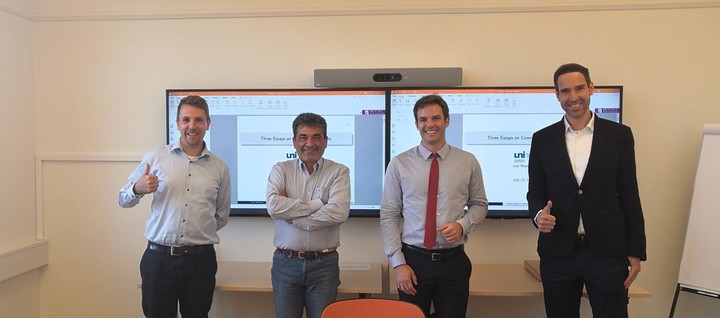Three essays on commodity markets
 Thesis viva
Thesis viva
This dissertation is constituted of three distinct chapters on commodity markets, which cover different aspects of finance. The first chapter focuses on the consequences of the financialization of commodity markets, an important topic from a regulatory perspective. Using a multivariate change-point algorithm, I statistically date when the financialization materializes, with a narrow confidence interval. Using this date as a reference point, I use panel data methods to statistically assess the impact of the financialization on commodity futures prices. I find that it leads to a change in the risk-sharing structure, but without being detrimental neither for a typical investor nor for the functioning of commodity markets. The second chapter employs economically-motivated variables (time to maturity, inventories, and uncertainty resolution) and shows that they are significant determinants of the contemporaneous volatility. Moreover, for the long-term horizons, I find that these variables improve the out-of-sample forecasts of the most advanced high frequency-based, time-varying parameters, models. In a multi-quantile regression setting, I find that these variables do not yield more robust estimations for the out-of-sample expected shortfall. The third chapter explores whether the emergence of commodity index traders affects asset pricing properties (factors and characteristics). Using a Bayesian approach, I determine the optimal set of factors pricing commodity futures. I subsequently use this optimal risk adjustment to test how the financialization alters liquidity and insurance premia. Finally, I use a panel data method to test how these characteristics determine commodity returns, controlling for their potential correlation with factors. More broadly, this chapter also questions the existence of risk premia vs. pure characteristics (frictions) in the asset class of commodity derivatives, as advocated by e.g. Black (1976a), and calls for more research in this area.